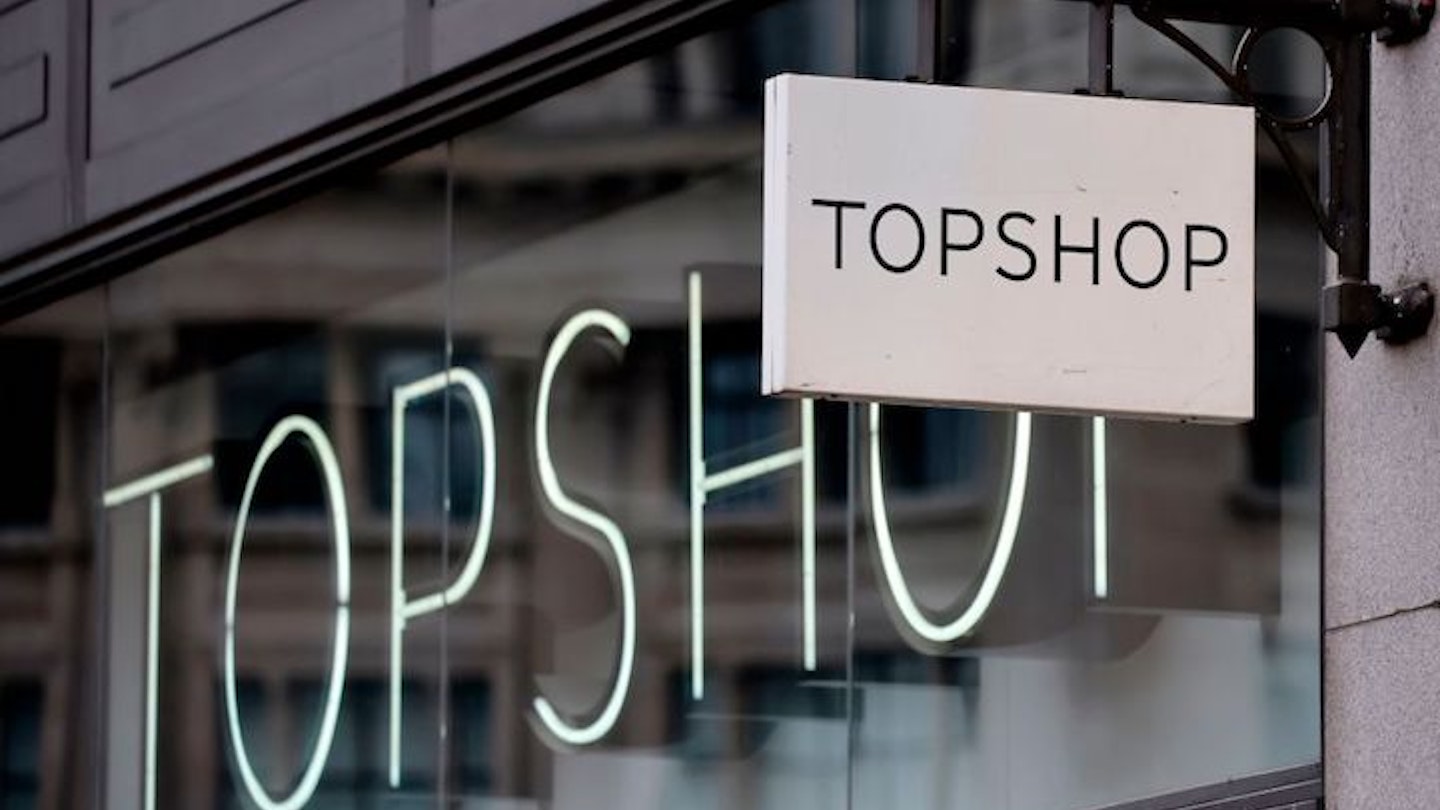For anyone still asking what on earth happened to Topshop, a new BBC documentary, Trouble at Topshop, shines a light on the reality of its demise. It makes for nostalgic, if depressing viewing.
The first incarnation of Topshop was born in 1964, but it was in the nineties that its fashion currency started to soar. Led by Jane Shepherdson, and her team of passionate women, they showed what happened when the men at the top let women create what they actually wanted to wear (and subsequently, what happens when you don’t).
Caren Downie, Topshop buying director from 1998-2008 (she left for Asos, before founding the brilliant Finery) explains that, 'Female clothing fashion businesses were dominated by the men at the top of it. The type of product that they wanted to see was always shiny.' As the documentary traces the advertising imprint of Topshop, that male gaze and attitude blares out from its bizarrely provocative eighties imagery.
But Shepherson changed all of that. As she rose up ranks, she was trusted to run the brand as she saw fit. Under her reign silk dresses featured hand drawn original prints, the collections were refined and elevated, led by what her team themselves wanted to put on.
The late nineties and early noughties were halcyon, lucrative days for Topshop. Before the advent of online shopping supercharged fast fashion and consumer demand, a trip to the Oxford Circus flagship (which opened in 1994) became a pilgrimage.
It was a place full of thrills and surprises; the basement was stuffed with vintage sellers and upcycled pieces long before these became buzzwords. There was a nail bar (first manned by Nails inc, later taken on by Sharmadean Reid’s Wah Nails), later on a blowdry bar followed by Bleach London hair colour. It was a fashion circus which would swallow you up for hours; frequent visitors would know which changing rooms had the shortest queue (the back corner behind the knickers) and where to hover by the escalators to get mobile phone service.
Topshop's fashion credibility rose in sync with the thrill of the noughties London fashion scene; its pieces became cult markers of the era - the Baxter jean, a leopard print faux fur coat, grab-and-go ballet pumps and retro floral sundresses…
The brand not only began showing its own collection at London Fashion Week, but for well over a decade was the key sponsor behind the British Fashion Council New Gen initiative. It helped launch the careers of Christopher Kane, Jonathan Saunders, Mary Katrantzou, Louise Grey, Meadham Kirchoff, JW Anderson, Roksanda and Erdem… working with them on collaborations too, bringing their names to the masses.
At fashion week itself, Topshop would erect a seasonal catwalk space for New Gen talent to show in; you can perhaps trace the demise of a company by its catering. For those lucky enough to attend, the Topshop venue was a lifeline - at the beginning there were platters of food, trays of champagne and one time dirty martinis at Richard Nicoll. By the end, you were lucky to find a branded water bottle. In the industry, Topshop was taken seriously. Its 40% discount card, only bestowed to senior fashion editors, was a mark of having made it.
'Topshop helped launched the careers of Christopher Kane, Mary Katrantzou and Erdem'
The shift came when Phillip Green blustered in (he bought Arcadia in 2002), and wanted to bathe in the front row glory which Shepherdson and her team had created. Not to mention his difficult management style, and demands for cheaper manufacturing prices. Shepherdson departed, with Downie following shortly after.
Ultimately, Green’s old school rag trade meets eighties city dealer approach worked wonders for his own bank balance but was hopeless against the rapidly emerging online hyper-fast fashion world. His schtick for patrolling the (heavy on the overheads and rent) shop floors moving rails around meant nothing in the face of data and algorithm led style-science emerging from Asos and Boohoo.
For many Millennials, these Topshop women’s sharp grasp on what we wanted to wear saw us through from teenage kicks to maternity wear. Everytime I walk past Oxford Circus, it jars. The name still sits over the doorway, but the windows, where Kate Moss once stood, proclaim its incoming Swedish incumbents with a giant Hej.
Will hoards of teenagers hover outside on the corner of Ikea, waiting for their best friends to rise up the tube steps? Will they dawdle up and down, feeling intoxicated by the window displays of Billy bookshelves and cactus plants, desperate to get down the escalators to snag a new linen basket? Will they spend their whole Saturday afternoon trying out cutlery? When everyone’s spent enough time debating uplighters will they all arrange to meet in two hours by the Daim bars…? How many times will they walk in circles past the clip frames hoping to find a lost pal…
Oh, to be lost in Topshop again.
Trouble at Topshop starts Monday 26 September, 9pm, BBC Two
